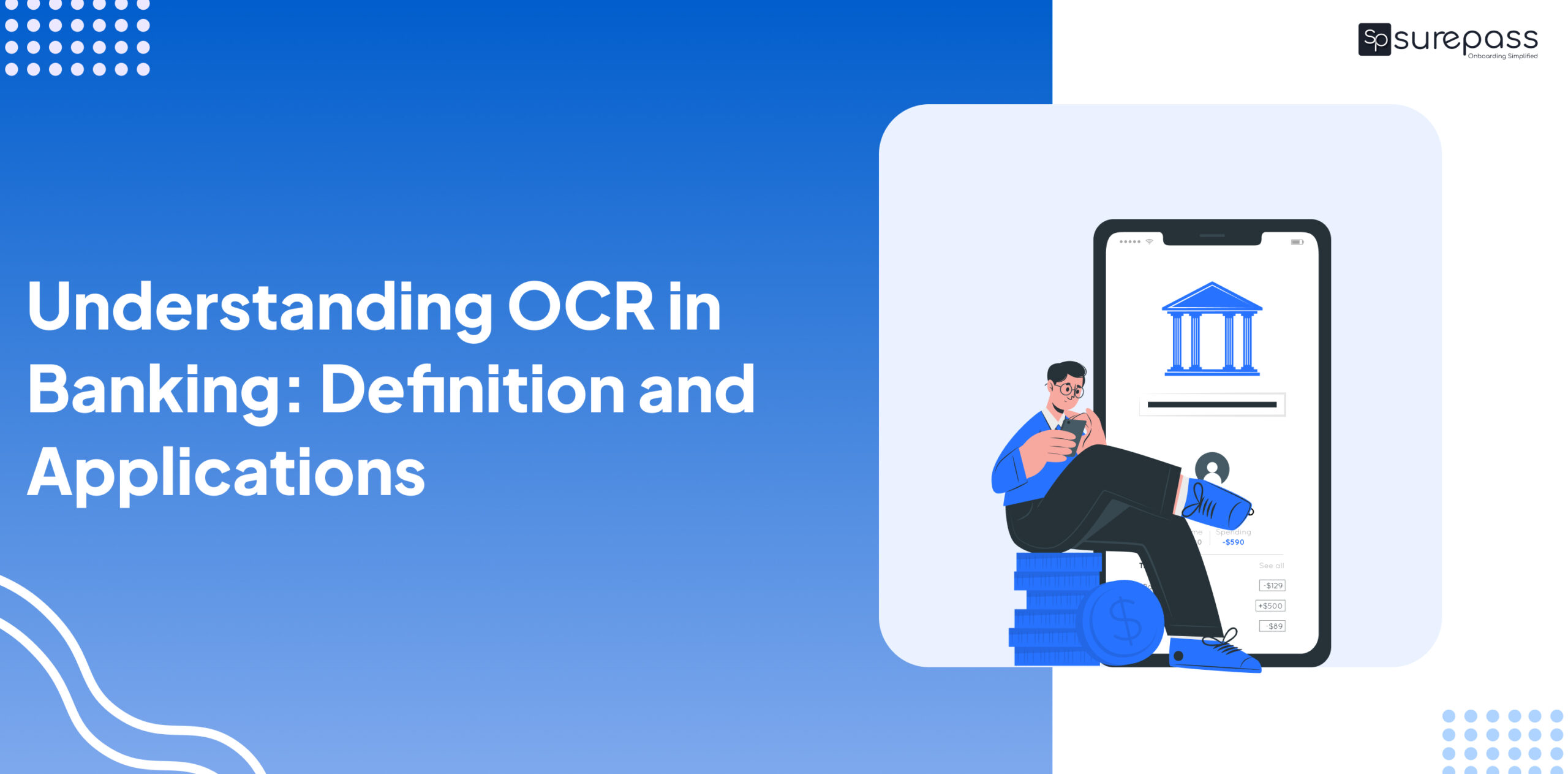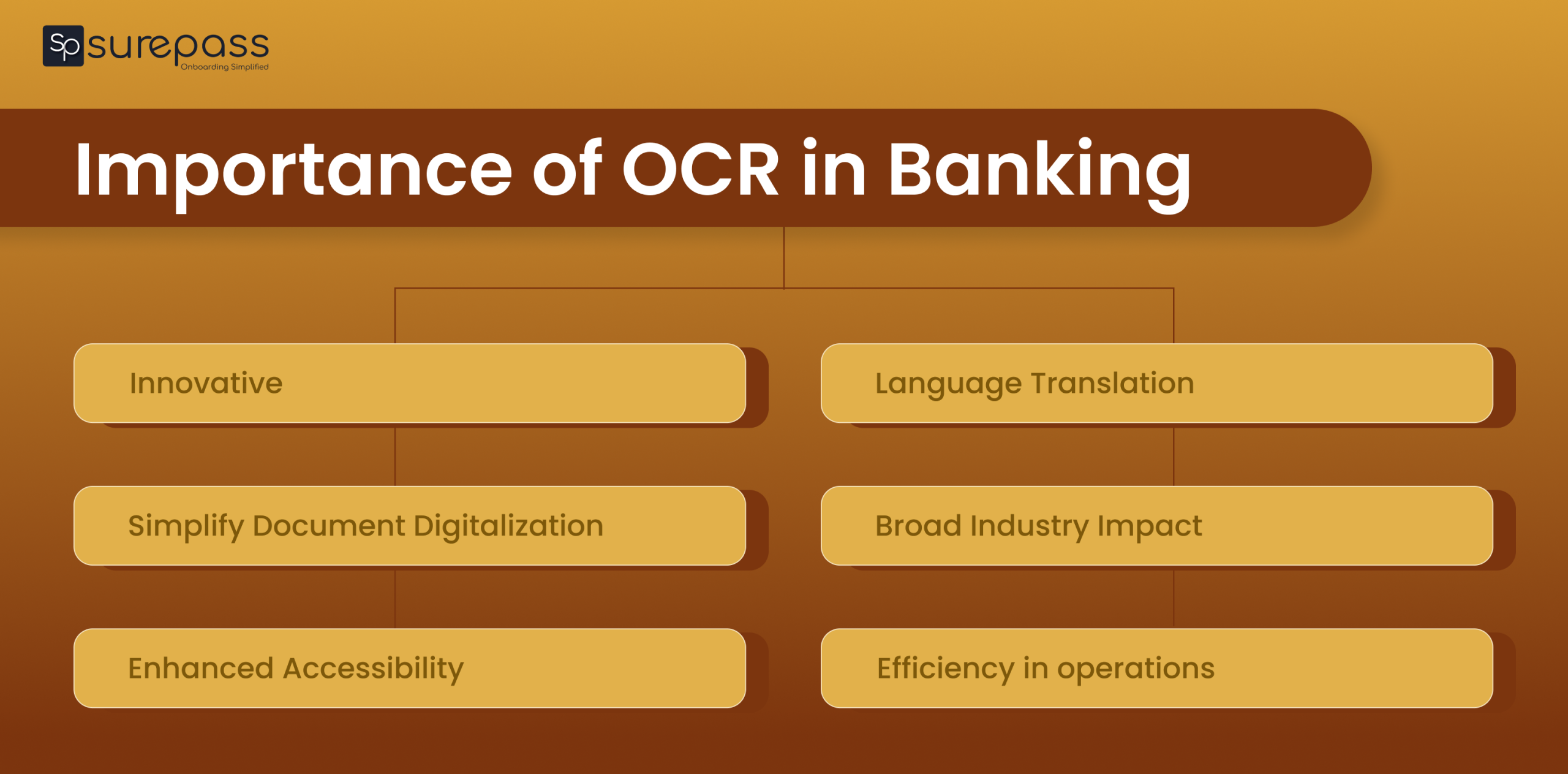OCR in Banking
Banks and financial institutions handle a large volume of documents and data. Extracting and managing a large piece of information is inefficient and prone to errors. The data entry task and physical document management are cost-effective. Here, OCR in banking technology simplifies document management work. Here, in this blog, you will learn about the OCR in detail and how it helps in banking operations.
What is OCR?
Optical character recognition (OCR) is the process of converting scanned documents and image-based data, such as handwritten, typed, or printed text, into a digital, machine-readable text format. The goal of the OCR process is to convert analogue text into digital text, or a format that a computer can encode. OCR is a straightforward and effective technology that tackles a range of industrial applications, saving companies millions of dollars and labor hours.
Automate your KYC Process & reduce Fraud!
We have helped 200+ companies in reducing Fraud by 95%
OCR Meaning in Banking
OCR, or optical character recognition, is the process of employing technology to read text that has been scribbled or printed and placed into digital representations of the original documents, such scanned paper documents.
The main purpose of OCR is to read text from a page and translate the characters into code that can be utilised for data processing. Text recognition (OCR) is another term for optical character recognition.
OCR systems use a mix of hardware and software to turn physical documents into machine-readable text. Text is copied or read using hardware, such as an optical scanner or specialist circuit board, whereas complicated processing is often handled by software.
In order to do more sophisticated intelligent character recognition (ICR) tasks, such as language or handwriting recognition, the application can additionally leverage artificial intelligence (AI).
The most common application for OCR is the creation of PDFs from hard copy legal or historical documents. This soft copy of the document allows users to edit, format, and search it just like they would if they were using a word processor.
Using OCR technologies to extract and validate documents and IDs with automated systems that employ AI to do authentications of multiple fields like name, address, ID number, etc. is a wonderful way to leverage digital onboarding.
How does OCR in Banking Work?
Here is how OCR works:
Document Scanning
In this step, the OCR scanner thoroughly examines the physical documents. The scanner captures an image of the physical documents into a digital file.
Image Conversion
After scanning, the software converts the scanned image into a black and white format (binary).
- Light areas represent the background
- Dark areas represent the text or characters to be recognized.
Pre-Processing (Image Cleaning)
Before recognizing the text, OCR cleans and enhances the image to improve accuracy. It removes extra noise, straightens tilted images, and sharpens text.
Character Recognition
OCR thoroughly analyzes the dark text regions and identifies characters (letters or numbers). Machine learning and deep learning algorithms detect patterns and convert each symbol into digital text.
Post Processing (Error Correction)
OCR checks and corrects the extracted text. It uses built-in dictionaries or sector-specific terms to verify spelling and ensure accuracy. It helps in delivering clean, verified, and usable digital text.
Importance of OCR in Banking
These are the examples that highlight the importance of OCR:
- Innovative: This technology has transformed how data is captured, processed, and managed across industries.
- Simplify Document Digitalization: OCR helps in the quick extraction of information from physical documents such as IDs, Passports, and license plates.
- Enhanced Accessibility: OCR helps smartphone applications, which simplifies everyday tasks such as scanning receipts or reading printed texts.
- Language Translation: An OCR-based application helps translate foreign language signs or documents in real time.
- Broad Industry Impact: OCR technology is beneficial for multiple sectors, like education, government, and logistics.
- Efficiency in operations: OCR helps in automating KYC, check processing, and data entry. It reduces the chances of manual errors and enhances efficiency.
Top Applications of OCR in the Banking Sector
There are several uses for OCR, some of which are as follows:
- Transferring printed documents into editable versions for word processors like Google Docs or Microsoft Word by scanning them.
- Search engine content is being indexed for print materials.
- Automation is being used for data entry, extraction, and processing.
- Translating written content from papers into speech for blind or visually impaired people.
- Preserving old materials in searchable media, such as phone books, periodicals, and newspapers.
- A bank teller is not necessary when using computerized cheque depositing.
- Signing and storing important legal documents in an electronic database.
- Recognizing text, such as license plates, using a camera or software.
- Arranging letters according to the destination before sending them.
- Images have their words translated into a particular language.
OCR in Banking in the Digital Era
Banks are switching from paper-based document management to digital repositories in the digital age. By facilitating the transformation of physical documents into searchable, computer-readable digital representations, OCR plays a crucial part in this shift. This makes document sharing, storage, and retrieval more effective for both clients and bank staff.
OCR technology can assist AI-driven chatbots in more effectively comprehending and handling client enquiries. From client messages, it may extract pertinent data to speed up answers.
In order to enable clients to deposit checks by just snapping a photo of them with their cellphones, OCR technology has been incorporated into mobile banking apps. By reading the data from the check and processing the deposit digitally, the OCR technology eliminates the requirement for in-person or ATM deposits.
How would Surepass’s OCR-based document verification solution help you?
Surepass offers an AI-enabled OCR solution that helps in simplifying the document verification work during onboarding and the identity verification process. Through OCR-based document verification, businesses can simplify the banking process.
- Automated Data Entry: The API adds automation to the work and eliminates manual data entry. It reduces labor and minimizes errors.
- Faster Data Processing: It enhances operational efficiency with efficient data processing and enhances the customer experience.
- Error-Free Operations: The AI advanced technology removes the risk of human errors and ensures data accuracy.
- Cost Reduction: The automatic verification reduces the operational costs and optimizes the workforce.
Conclusion
OCR technology is a revolutionary technology that simplifies document handling and verification work. It can be used for various applications. However, OCR in banking is used for document management and verification. It automates the data entry work and enhances the efficiency of operations.
FAQs
Ques: What is OCR in Banking?
Ans: It refers to the technology that converts scanned documents into machine-readable, searchable, and editable data.
Ques: What is OCR full form in banking?
Ans: OCR’s full form is Optical Character Recognition.
Ques: How does OCR help banks and financial institutions?
Ans: It helps banks and financial institutions automate data entry work, reduce manual errors, and enhance loan processing.
Ques: What is the difference between OCR and ICR in banking?
Ans: OCR refers to Optical Character Recognition, which reads printed or typed text, while ICR is Intelligent Character Recognition that can recognize and learn handwritten text.
Ques: How is OCR used in banking?
Ans: It is used to automate the conversion of a bank statement into editable and searchable text.







